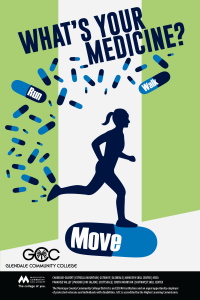Tag Archives: health
Growth Happens!
There’s nothing like a good worldwide pandemic to shift us into a new gear. I personally feel like I have been shot out the other side of an intense 2-year sabbatical on life, technology and communication.
While I was floating around in the black hole following armageddon (March 2020), I picked up a few handy skills and lost a few unnecessary habits.
I have read quite a few personal and professional growth books, attended many online conferences and webinars, created many video lectures, discovered Apple Fitness +, signed up for and started a 9-month Health & Wellness Coaching training program, started craving human connection, and reflected deeply on best ways to connect with my students, coworkers, family and friends.
Here’s one of the Health & Wellness Coaching tools that helped me take stock of where I needed to grow in my life. The tool is called The Wheel of Life, and you use it to rate your level of satisfaction in various aspects of your life.
Take a moment to rate 1-10 (low to high) your level of satisfaction with each of these areas in your life. Friends, family, significant other, career, money, health and wellbeing, personal growth and development, fun and recreation, physical environment.
Connect the dots and see if they form a big perfect circle. My guess is that if this wheel was on your bicycle, it would be a very bumpy ride! It’s great to be enlightened on areas that have been unintentionally ignoring.
While I was struggling with life balance and the necessity of nutrition, physical fitness, stress management and sleep, I had been ignoring the social dynamic of my life, on the other side of the wheel. Since I lean more toward introversion, I figured I was justified in enjoying my own company. It took a Health and Wellness Coach to point out that even introverts need the “connection injection!”
Since I have been making a strong personal effort on the social side of the wheel, the physical side of the wheel began to take care of itself. It wasn’t that I ignored it, it was just that I wasn’t so hyper focused on it. It was like taking the spotlight and shining in a sightly different spot.
If you are looking for a Health and Wellness Coach, GCC plans to start a nationally board certified program in the Fall of 2023. In the meantime, reach out to me for free coaching sessions! I would love to help you see the light shining on your life to enhance your personal and professional growth!
Need to drink more water? Track it!
42
What do bananas, Bonytail Chub, and teaching have in common? Prepare to get my take on life, the universe, and everything…
In my hastily written (and grammatically unsound) post on inclusion, I had two major regrets. The first was the aforementioned text level grammar (my only defense was that I did write it on a phone). The second was that the focus on the importance of inclusion and how it relates to title bias prevented me from talking about a related issue that fundamentally defines my personal world view: Diversity.
I love bananas. They are easy to eat, versatile to bake with, and potassium helps keep my blood pressure regulated naturally. Bananas also served as an important lesson in diversity. Currently, bananas are in danger of extinction. Even though most of the concern is recent, the situation has been long predicted because of the reliance on just a few varieties of the crop. Pre-1950 there were two main varieties in stores. Then Panama Disease devastated the then common Gros Michel variety, which made Cavendish the most likely banana you would purchase in the store today. The lack of diversity in the banana crop made it ripe for an extinction-level problem. There is now a real chance my breakfast of choice won’t be available for the next generation. Foresight into maintaining the diversity of the bananas, even if some of the varieties weren’t as “commercially ideal” as a cash crop, would have resulted in an easier solution to the possibility of extinction.

If you haven’t been keeping up on the amazing progress made in science in the last decade, you would be amazed (or horrified) at the godlike possibilities. The good news: those that worry about the human race ending in the next twenty years can take some consolation in the fact that we are a fairly inventive lot, and when push comes to shove can do some incredible things. The bad news: we really work best with templates, and as the banana issue shows, humanity often gets a failing grade in foresight.
Enter the Bonytail Chub, a cute fish native to the Colorado River system. Due to climate change and invasive species this little fellow (and many other native fish species) are also in danger of extinction like my beloved banana. Where the negatives of losing bananas are easy to digest, the negatives of losing the Bonytail Chub (and its many relatives) may not be as clear. Clarity is exactly the problem. Bonytail Chub’s live and thrive in muddy backwaters. Where many fish do best in clean fresh waters, the Bonytail Chub’s ability to live in less than ideal conditions make it unique. Remember how bananas wouldn’t be in their predicament if less ideal varieties had been maintained? With the very real (and aggravatingly rarely talked about) problems of dwindling freshwater supplies and water rights, having a species that contains the genetic puzzle pieces that allow it to thrive in poor water conditions could end up being what is required to save other species (moral questions of genetic manipulation aside).

Bananas and Bonytail Chubs are just two examples showing the importance of diversity in the natural world. Diversity is just as critical in every other aspect of life, including one that most of you reading this might be more familiar with.
Teaching is not a zero-sum game. I spend quite a bit of time every week creating videos for my classes to explain the objectives for the week and recap issues from the previous week. I know from analytics that only a third of my students actually make use of these videos (even less if the videos are too long), but those that do have given me consistent feedback that the videos are a major help to them. In the same respect, some students respond well to written feedback and instructions, and others do best in group work settings. In thirteen years of teaching, I’ve learned that one lecture does not fit all. One assignment or delivery is not the end game. Everyone learns and excels in different ways, so trying to maintain a balance of approaches is important to success. In other words, educational diversity.
Over the last three years of writing on 6×6 I have often eluded to how one of the most important aspects of critical thinking is to be open to new ideas, my hope is that this post will explain my belief structure behind that advice. Simply put: diversity is the answer to almost every problem.
Educational diversity results in higher success rates for students.
Economic diversity fosters resilience during downturns.
Cultural diversity leads to a better more understanding society.
Biodiversity is key to the survival of the planet and the species that reside on it.
So next time you are sipping a cup of tea under a star-filled sky contemplating the meaning of life, the universe, and everything appreciate the fact that there is probably more than one answer and more than one question, and that is a very healthy thing.
Exercise is Medicine
Exercise is Medicine.
There is no magic pill, except the kind that you see depicted in the image below.
Exercise is Medicine is a global initiative that was created by the American Medical Association and the American College of Sports Medicine. In a nutshell, they want doctors to recognize physical activity as a vital sign. So next time you visit the doctor, don’t be surprised if you are quizzed on the amount of physical activity you are doing.
The value of this overarching message is everywhere around us. At the community college, it can be seen at every level of learning and it impacts every single one of us. A healthy employee and a healthy student is the best recipe for college success.
Teaching: As faculty, are we taking the time to look after ourselves so we can serve our students at our optimal ability? SPICES stands for social, physical, intellectual, career, emotional, and spiritual wellness. This is an ongoing journey, not a destination.
Learning: Students who engage in regular physical activity will benefit from improved selective visual attention (SVA), which experts agree is the key to learning.
Student Success: Regular participation in physical activity is a determinant of student success. There are literally thousands of studies on this topic.
Trend Toward Inactivity in the Workplace: When we add online teaching and learning to our list of responsibilities, the amount of sitting time increases exponentially. In 1950, 30% of Americans worked in high-activity occupations. By 2000, only 22% worked in high-activity occupations. Conversely, the percentage of people working in low-activity occupations rose from about 23 to 41%.
Source: http://www.hsph.harvard.edu/obesity-prevention-source/obesity-causes/physical-activity-and-obesity/
Check out this infographic on Sitting is Killing You to see why inactivity is a concern for your overall health.
Do you believe exercise is important? Please take the following survey. The results will be shared in next week’s blog post. Survey: My Benefits of Physical Activity.
See you next week!
|
|



